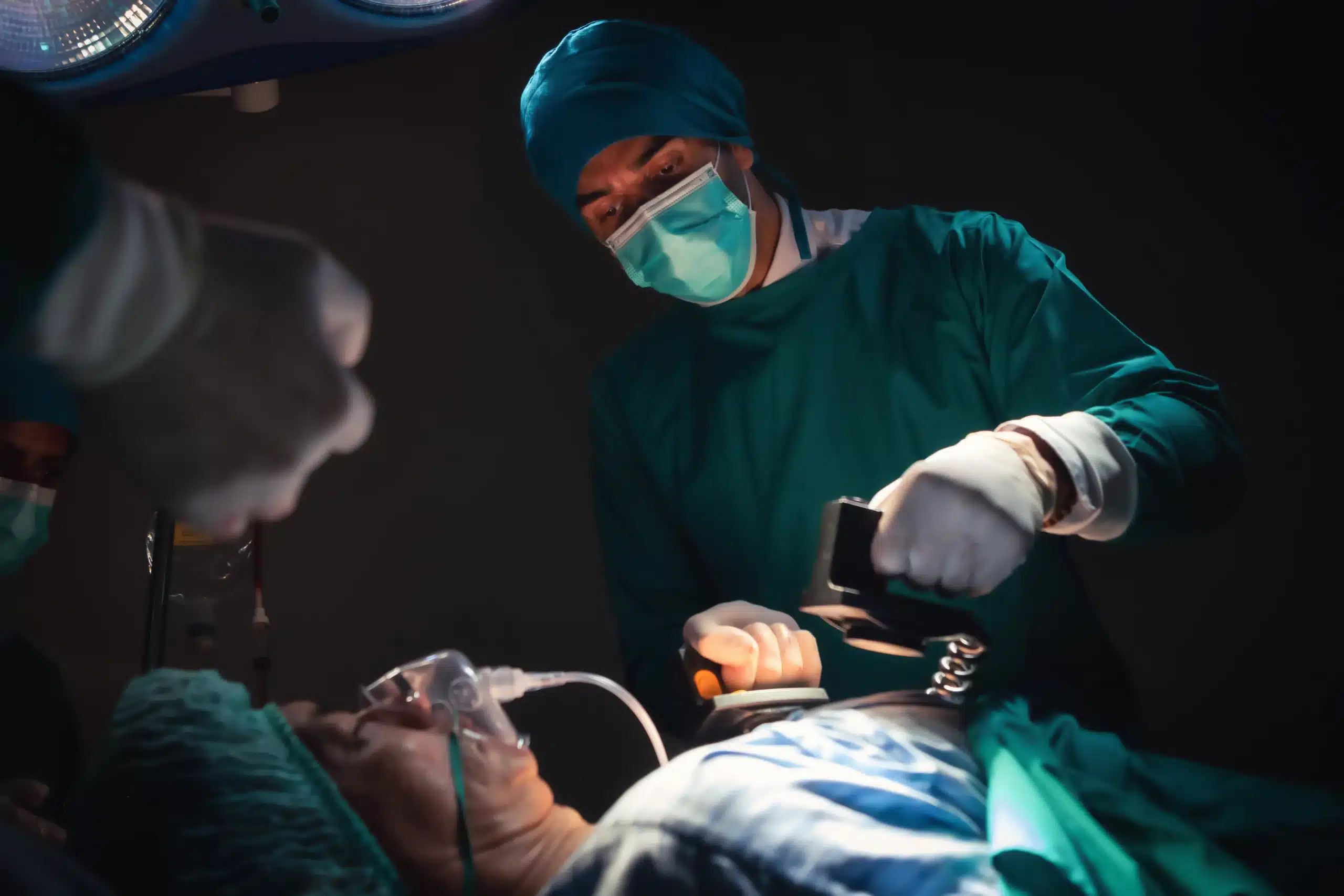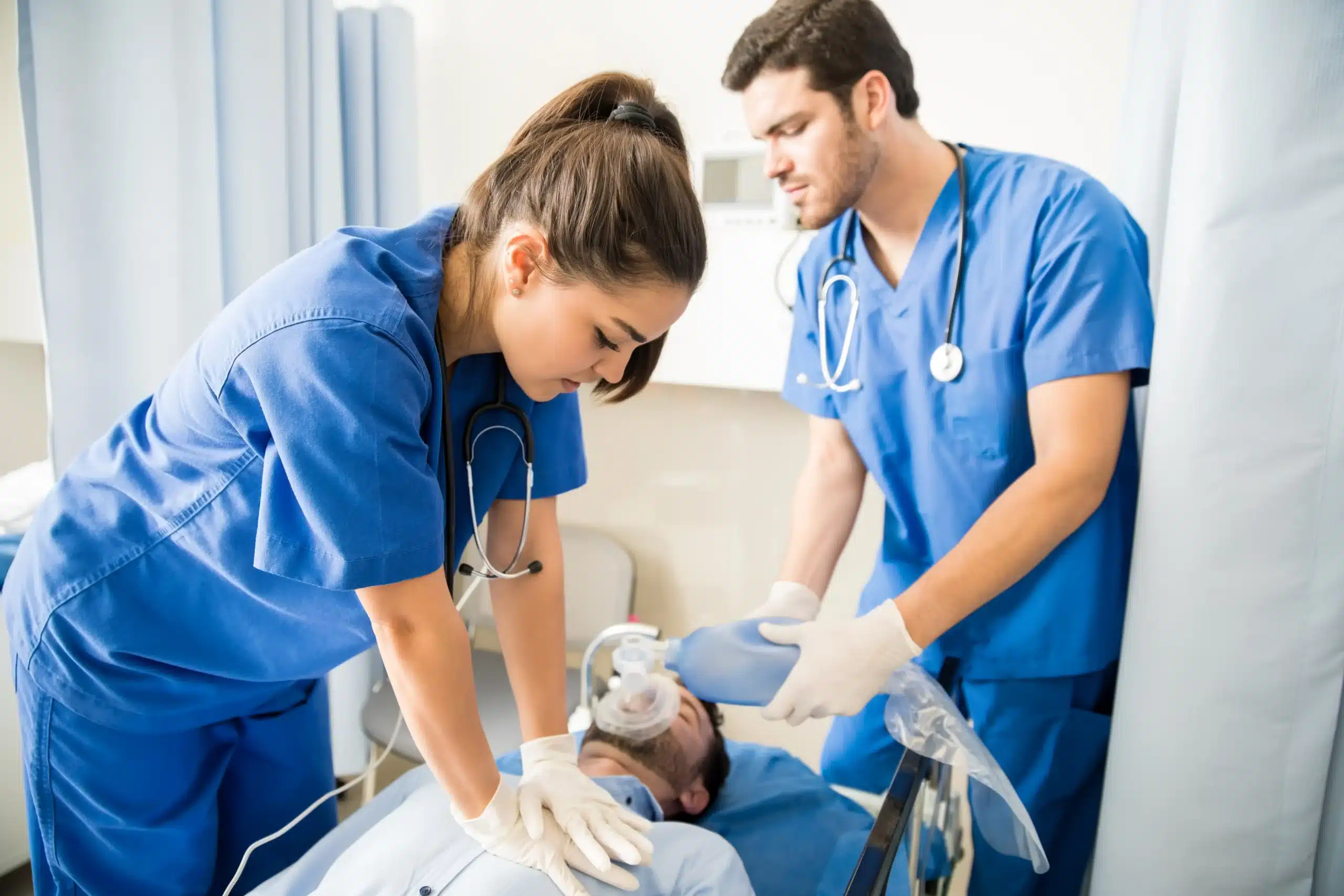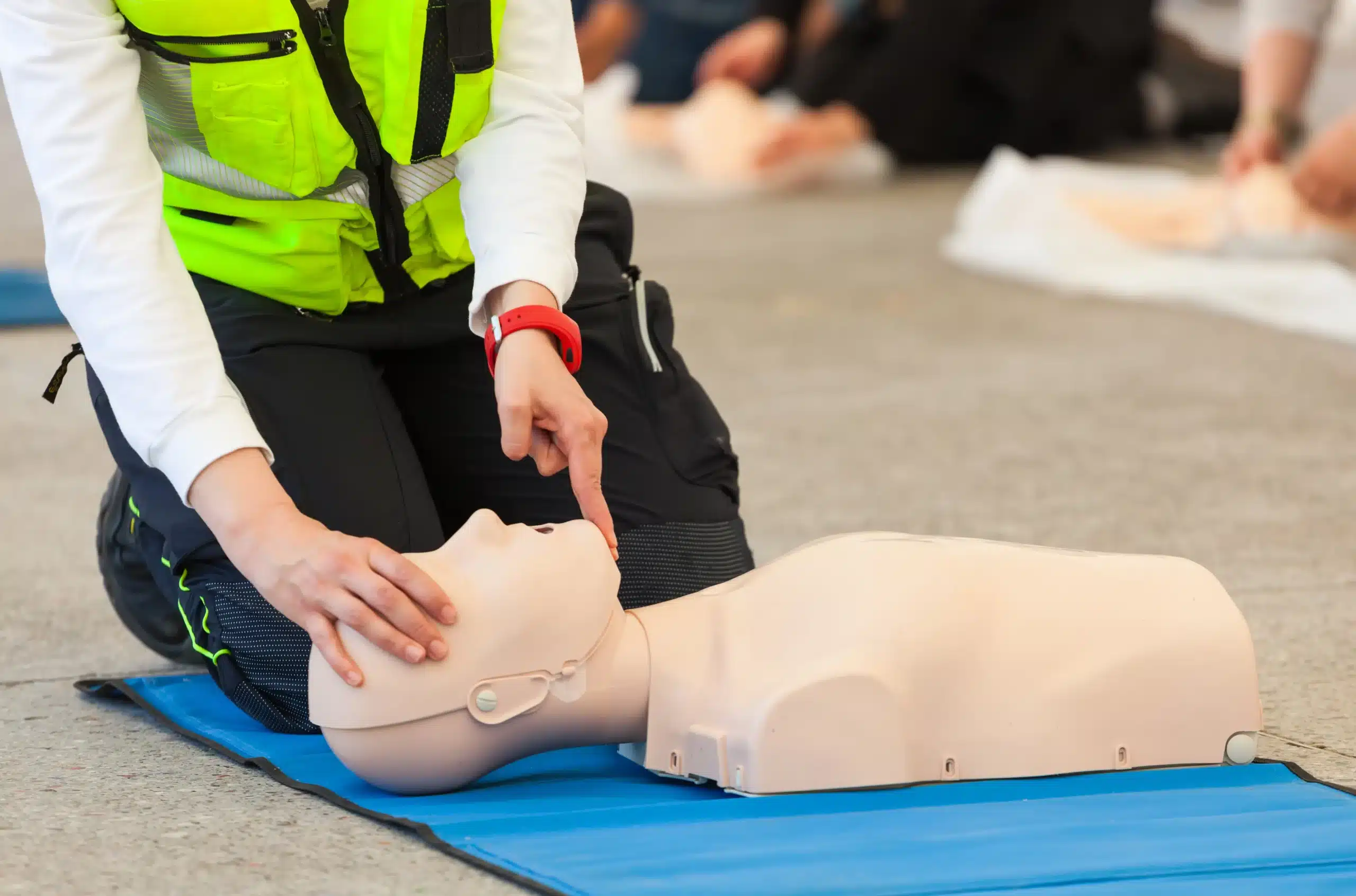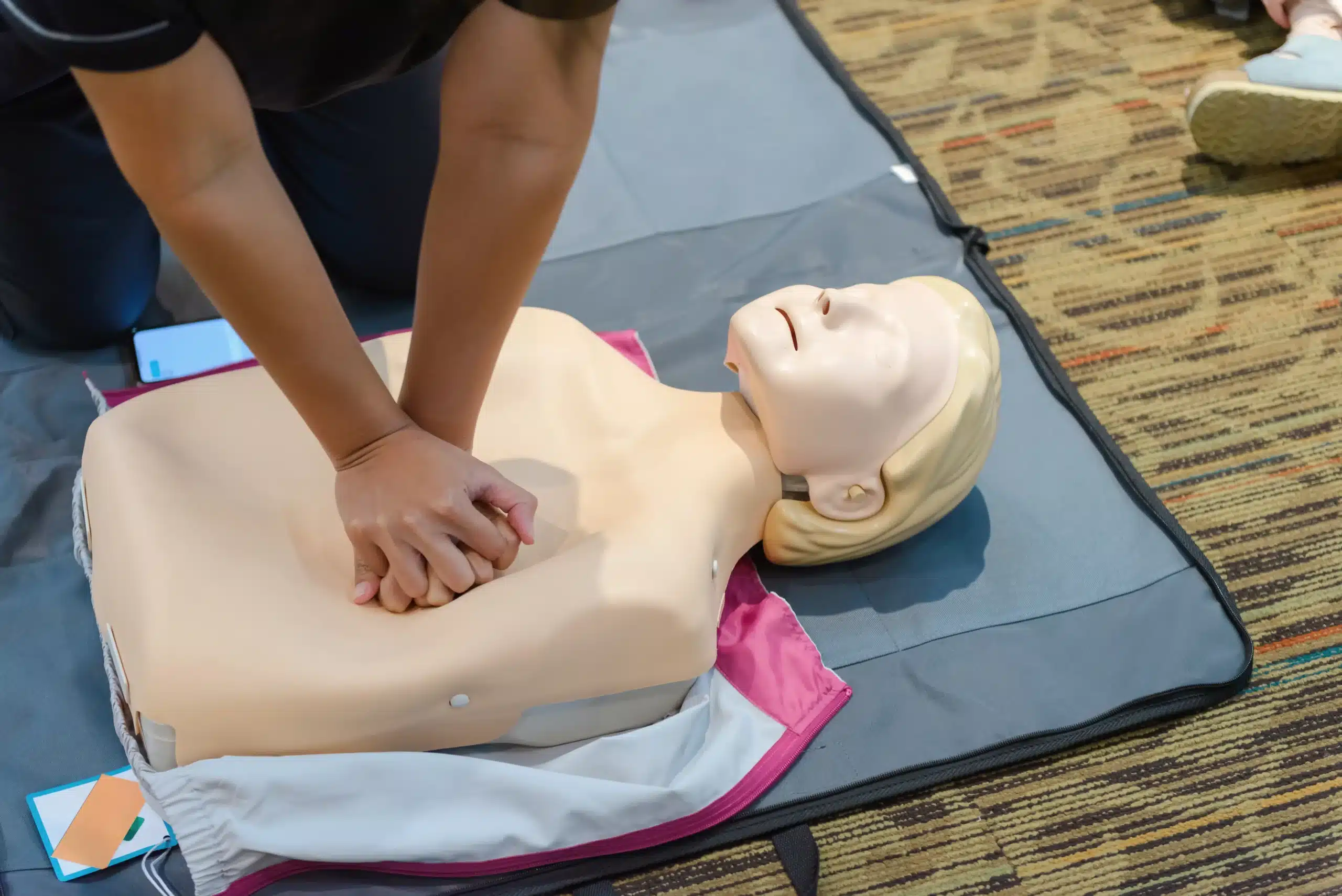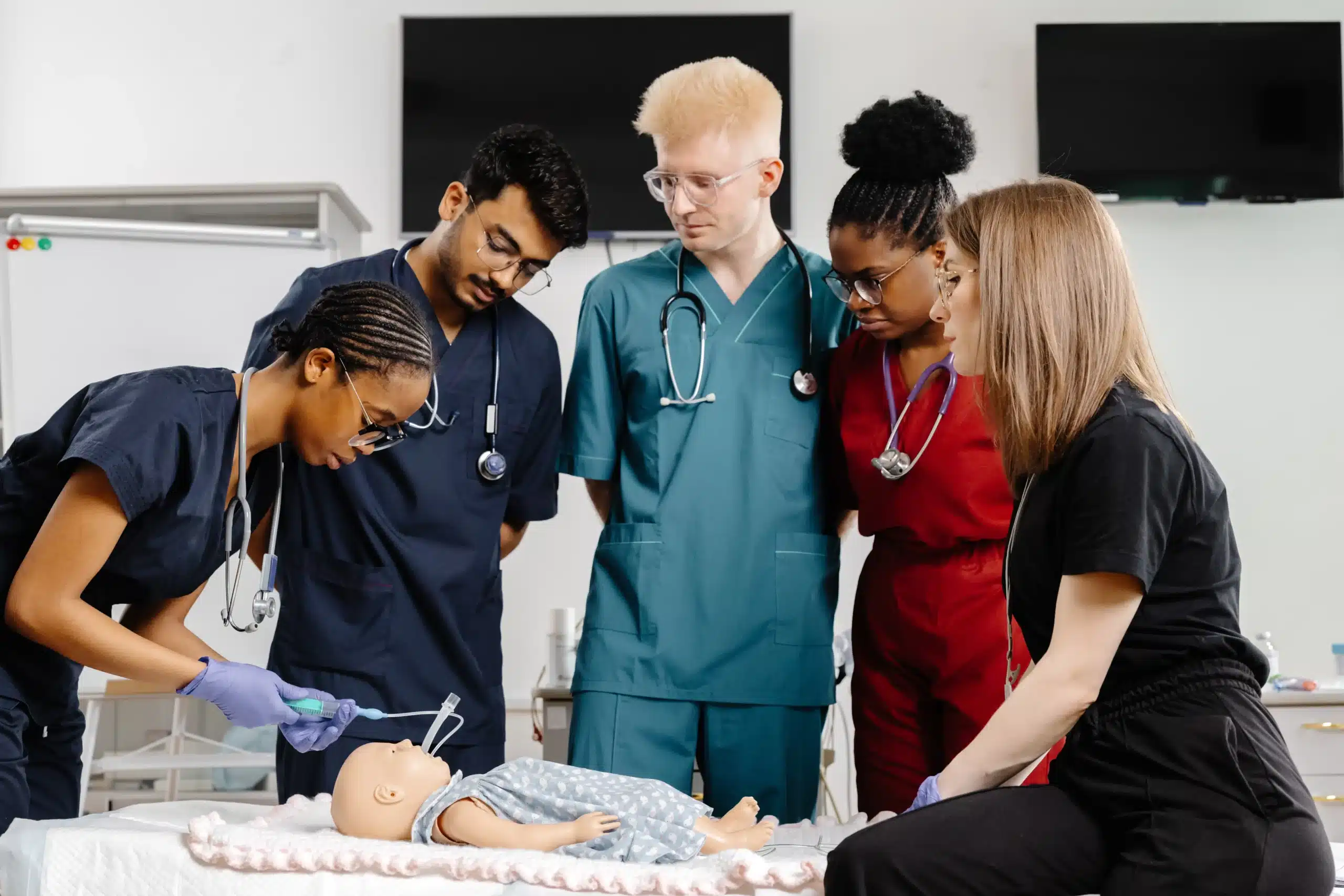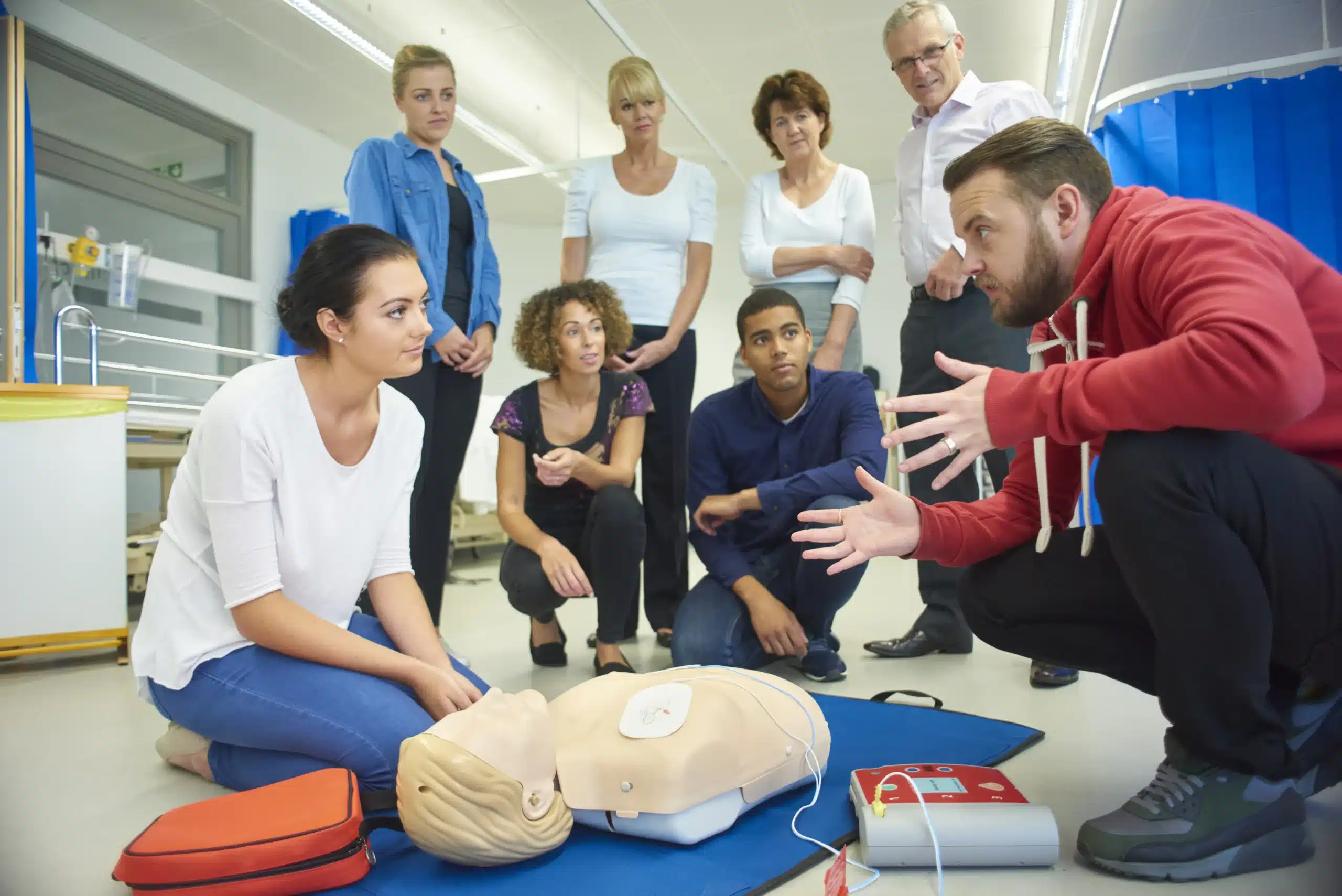Emergencies can happen anytime, anywhere. Are you ready to respond? BLS certification empowers you to act quickly and confidently in critical situations, providing essential care until professional help arrives. This guide is your one-stop resource for understanding BLS certification, from the core skills it covers to the process of getting certified. We’ll explore the different training options available, discuss the cost and value of certification, and provide tips for finding “BLS certification near me.” Let’s dive in and discover how BLS certification can transform you into a capable and confident first responder.
Key Takeaways
- BLS certification is a powerful tool for anyone: It provides essential life-saving skills applicable in various settings, from homes and workplaces to healthcare facilities. Knowing BLS can make you a vital link in the chain of survival.
- Finding the right BLS course is easy: Explore options like in-person classes, online modules, or blended learning to match your schedule and learning style. Consider factors like cost, location, and provider reputation when making your decision. Safety Training Seminars offers convenient and affordable courses in Northern California.
- Staying current with BLS is vital: Renew your certification every two years and regularly practice your skills to maintain proficiency. Consider continuing education opportunities to stay updated on the latest guidelines and best practices, ensuring you’re always prepared to respond effectively.
What is BLS Certification & Why Do You Need It?
Basic Life Support (BLS) certification equips you with the skills to respond to life-threatening emergencies. It’s the foundation for saving lives, focusing on immediate care for conditions like cardiac arrest, respiratory distress, and choking. BLS goes beyond basic first aid, emphasizing prompt recognition and intervention to improve survival odds. Think of it as the essential first step in the chain of survival, bridging the gap until professional medical help arrives. Whether you’re a healthcare provider or someone who wants to be prepared for anything, BLS certification empowers you to make a real difference. We offer a range of BLS certification courses to fit your needs.
Key BLS Skills
BLS certification covers a range of crucial skills, each playing a vital role in a crisis. You’ll learn how to deliver high-quality chest compressions, the cornerstone of CPR, ensuring continuous blood circulation. Training also covers rescue breaths, a technique to supply oxygen when normal breathing is compromised. BLS certification also teaches you how to use an automated external defibrillator (AED), a portable device that can restore a normal heart rhythm. Mastering these skills gives you the confidence to act quickly and effectively in emergencies.
Importance in Emergencies
In a medical emergency, seconds count. BLS certification empowers bystanders to provide immediate care, significantly increasing the chances of survival. For healthcare professionals, BLS is a fundamental requirement, ensuring they can respond effectively in critical situations. But it’s not just for medical settings; BLS skills are invaluable in any environment, from schools and workplaces to homes and public spaces. Knowing how to perform BLS can be the difference between life and death, giving you the tools to stabilize a person until paramedics arrive. For more information on BLS and other life-saving courses, explore our Northern California CPR directory.
Who Needs BLS Certification?
BLS certification equips individuals with the skills to respond to life-threatening emergencies, especially those involving cardiac arrest or respiratory distress. But who exactly benefits from this training? While many associate it with doctors and nurses, a range of professions find BLS invaluable.
Healthcare Professionals
For healthcare professionals, BLS certification is often a prerequisite for employment. Doctors, nurses, paramedics, medical assistants, and other healthcare providers working in hospitals, clinics, or other healthcare settings rely on these skills daily. BLS training provides the foundation for delivering high-quality patient care and responding effectively in critical situations. It ensures they can perform CPR, use an AED, and provide other life-saving interventions. For those looking to advance their skills, ACLS certification builds upon the foundational knowledge of BLS.
First Responders
First responders, such as firefighters, police officers, and EMTs, are on the front lines of emergencies. BLS certification is crucial for these professionals, enabling them to administer immediate care before advanced medical personnel arrive. Their ability to quickly assess a situation and provide basic life support can significantly impact a person’s chances of survival.
Other Professions
Beyond healthcare and emergency services, BLS certification is a valuable asset for professionals in various fields. Educators, coaches, childcare providers, lifeguards, and even fitness trainers can benefit from BLS training. These individuals often work with children or adults and may encounter situations requiring immediate medical assistance. Having BLS skills allows them to respond confidently and effectively in emergencies, providing critical care until professional help arrives. Even individuals working in corporate settings or those who simply want to be prepared for unexpected situations can find value in BLS certification. Contact us today to learn more about our BLS certification courses and find a class near you.
Find BLS Certification Courses Near You
Finding the right BLS certification course shouldn’t be a headache. Here’s a breakdown of where to look, so you can get certified and start saving lives.
Safety Training Seminars
For those in Northern California, Safety Training Seminars offers a range of American Heart Association courses, including BLS. They focus on affordability and convenience, making it easier to fit training into your busy schedule. Their streamlined approach to certification, especially with the RQI program, can get you certified quickly and efficiently. They serve several major cities, including San Francisco, San Jose, Oakland, Sacramento, Berkeley, and Concord. Check their website for their low price guarantee. They even have a handy Northern California CPR directory to help you find a class near you. You can also contact them directly with any questions.
American Red Cross
The American Red Cross is a well-known provider of BLS certification courses. They offer both in-person and blended learning options (a combination of online and in-person training). This flexibility is great for those who prefer a self-paced online component combined with essential hands-on practice. You can find Red Cross BLS classes across the country. Their website provides resources to help you find a BLS class near you.
Local Hospitals & Community Colleges
Your local hospital or community college is another excellent place to search for BLS certification courses. These courses often focus on the core skills needed for BLS, such as high-quality chest compressions, rescue breaths, and using an AED. Plus, they’re often conveniently located within the community. Check with your local hospitals and community colleges to see what they offer. Many post their course schedules online.
Online Courses
If you prefer a more flexible learning schedule, several organizations offer fully online BLS courses, including the Red Cross. These courses typically involve online modules followed by an in-person skills assessment. This format can be a good fit for those with busy schedules or those who prefer to learn at their own pace. Just be sure to choose a reputable provider that meets the American Heart Association guidelines. The Red Cross website is a good starting point for finding online BLS training.
Choose the Right BLS Training Format
Finding the right BLS training format depends on your learning style, schedule, and budget. Let’s explore the most common options—in-person, online, and blended learning—to help you make the best choice.
In-Person Classes
In-person BLS classes offer a hands-on learning experience with direct interaction with a certified instructor. This format allows for immediate feedback, personalized guidance, and the opportunity to practice skills in a realistic environment. This in-person training is especially beneficial for those who learn best through tactile and kinesthetic methods. The structured classroom setting can also help maintain focus and encourage interaction with peers.
Online Courses
Online BLS courses provide flexibility and convenience for those with busy schedules or limited access to in-person training locations. You can complete the theoretical coursework at your own pace, pausing and reviewing material as needed. Many online courses use interactive modules and simulations to enhance engagement and knowledge retention. If you’re looking for a convenient option, explore our online RQI classes.
Blended Learning
Blended learning combines the advantages of both online and in-person training. Typically, you’ll complete the cognitive portion of the course online, followed by an in-person skills session. This approach offers the flexibility of online learning with the essential hands-on practice and instructor feedback. Blended learning is a great option for those who want a comprehensive learning experience but need more flexibility than a traditional in-person class.
Factors to Consider
When choosing a BLS training format, consider factors like your learning preferences, available time, budget, and comfort level with technology. Think about whether you thrive in a structured classroom environment or prefer the autonomy of self-paced learning. Also, consider the importance of hands-on practice and instructor feedback in developing your skills. If you’re unsure which format is best, contact Safety Training Seminars to discuss your needs. We offer a low price guarantee and serve several areas in Northern California, including a convenient San Francisco location.
BLS Certification: Cost & Value
So you’re ready to invest in your future and get BLS certified? Great! Let’s talk about cost and value—because BLS certification is an investment in yourself and your career.
Average Price Range
BLS certification costs vary, but you can generally expect to pay between $30 and $150 per person. This can change based on where you live and who is offering the training. Workplace CPR training usually falls on the lower end of that range, between $20 and $55. Safety Training Seminars offers a low price guarantee so you can find an affordable option that fits your budget.
Factors Affecting Cost
Several things influence how much a BLS certification course costs. The training provider themselves will have different pricing structures. The format of the course matters too. Online courses sometimes have different pricing than in-person classes. And, of course, location plays a role. Big cities might be pricier than smaller towns.
Discounts & Promotions
Want to save some money? Look for discounts! Many training providers offer deals, especially for groups or companies booking training sessions. It’s always smart to compare prices from a few different providers and see if anyone’s running a special promotion. Check our CPR classes page for current deals.
Career Benefits
Getting BLS certified isn’t just about checking a box; it’s about opening doors. A BLS certification is a valuable asset for your career. Many healthcare employers require it, so it can be your ticket to landing a job or getting a promotion. It shows you’re committed to providing high-quality care and that you have the skills to handle emergencies. Think of it as an investment that pays off in the long run. Contact us to learn more about our RQI classes.
Get BLS Certified: The Process
So, you’re ready to get BLS certified? Great! Here’s what you can expect. The process is straightforward and designed to equip you with the skills you need to respond effectively in emergencies. Whether you’re a healthcare provider or simply want to be prepared, understanding these steps will help you feel confident going into your training.
Course Duration & Content
BLS courses generally take a few hours to complete, covering essential lifesaving techniques. You’ll learn how to perform high-quality chest compressions, deliver rescue breaths, and use an automated external defibrillator (AED). The curriculum emphasizes a combination of knowledge and hands-on practice. Expect a dynamic learning environment with demonstrations, simulations, and opportunities to practice your skills. Safety Training Seminars offers a variety of course schedules to fit your busy life. We encourage you to explore our Northern California CPR directory for convenient locations.
Exam Requirements
The BLS certification process involves a written exam and a skills assessment. The written exam tests your understanding of BLS principles and procedures. It focuses on practical application, not rote memorization. The questions assess your ability to apply the knowledge you gained during the course. Review materials and practice questions are often provided to help you prepare. Check out our low price guarantee to see how affordable getting certified can be.
Skills Assessment
The skills assessment, or practical exam, requires you to demonstrate your proficiency in performing BLS techniques. You’ll be evaluated on your ability to perform CPR, use an AED, and provide rescue breaths, often in simulated scenarios. This hands-on evaluation ensures you can effectively apply the skills in a real-life emergency. The instructors provide feedback and guidance, helping you refine your technique and build confidence. Our RQI classes offer a fast and efficient certification process.
Tips for Success
Preparing for your BLS certification is key to a smooth and successful experience. Review the course materials beforehand to familiarize yourself with the content. Active participation during the course, including asking questions and engaging in discussions, will solidify your understanding. Take advantage of practice opportunities to hone your skills and build muscle memory. Most importantly, approach the training with a positive attitude and a willingness to learn. Contact us today to learn more about our BLS certification courses.
Maintain Your BLS Certification
Once you’ve earned your BLS certification, staying current is key. Knowing how long your certification is valid and how to renew is crucial for being prepared to respond effectively in an emergency.
How Long is Certification Valid?
BLS certification is typically valid for two years. This timeframe is set by organizations like the American Heart Association and the Red Cross to ensure professionals maintain up-to-date knowledge and skills. After two years, you’ll need to renew your certification to continue practicing. Keep track of your expiration date so you can plan your renewal in advance.
Renew Your Certification
Renewal courses are readily available, both online and in-person. This flexibility makes it easier to fit renewal into your busy schedule. Many providers offer streamlined renewal courses that focus on key updates and skill practice. Check with your original certifying organization or explore other options like Safety Training Seminars for convenient renewal courses. Our RQI classes offer a fast and efficient way to renew your American Heart Association certifications.
Continuing Education
Even after renewing your certification, staying sharp is important. The Red Cross offers helpful resources like games, quizzes, and videos to reinforce your BLS skills between renewals. Regularly reviewing these materials can build confidence and ensure you’re ready to respond effectively in any situation. Consider incorporating these resources into your ongoing professional development. You can also explore our Northern California CPR Directory for additional resources and training opportunities. We offer a low price guarantee, so you can find affordable options to maintain your skills. Contact us to learn more about our programs.
Top BLS Certification Providers Near You
Finding the right BLS certification course means understanding your needs and researching reputable providers. Here are a few well-known organizations and resources to get you started:
Safety Training Seminars
Safety Training Seminars offers a variety of BLS certification courses designed for healthcare professionals, first responders, and other individuals looking to develop these essential skills. They often incorporate hands-on training and real-world scenarios to prepare you for emergencies. Check their website for course schedules and locations in Northern California.
American Red Cross
The American Red Cross is a trusted provider of BLS certification and training. They offer courses in various formats, including in-person and blended learning options (a combination of online and in-person instruction). The Red Cross website is a great resource for finding classes near you.
American Heart Association
The American Heart Association provides comprehensive BLS training programs for healthcare providers. Their courses focus on high-quality CPR and effective team dynamics. Explore their website to find instructor-led courses and other valuable resources.
National CPR Foundation
The National CPR Foundation offers BLS training that emphasizes essential life-saving techniques. Their programs equip healthcare providers and first responders with the skills to confidently handle emergencies. More information about their training programs is available on their website.
ProCPR
ProCPR offers convenient online BLS certification courses designed for busy professionals. Their interactive modules are accessible from any device, making it easy to fit training into your schedule. This can be a great option if you prefer online learning or have limited availability.
CPR Today
CPR Today provides BLS certification courses for both healthcare providers and the general public. They focus on practical skills and knowledge to help individuals respond effectively in emergencies. Visit their website for course details and registration information.
BLS Certification: Common Myths
Let’s clear up some common misconceptions about BLS certification. Understanding these key differences will help you choose the right course.
BLS vs. CPR
One common area of confusion is the difference between BLS and CPR certification. While both teach life-saving skills, they have different target audiences. CPR training focuses on essential techniques for the general public, like chest compressions and rescue breaths. BLS builds on those CPR fundamentals by adding advanced skills for healthcare providers and first responders. Think of BLS as CPR plus extra techniques for various medical emergencies, such as respiratory distress and obstructed airways.
Who Benefits from BLS Training?
BLS certification is primarily geared toward healthcare professionals, including doctors, nurses, and EMTs. It’s also essential for first responders like firefighters and paramedics. These professions require a deeper understanding of life support techniques that go beyond basic CPR. However, anyone who wants comprehensive life-saving skills can pursue and benefit from BLS training.
Online vs. In-Person Certification
Another common question is whether online BLS certification is as effective as in-person training. Both formats have their pros and cons. Online courses offer flexibility, allowing you to learn at your own pace through interactive modules that adapt to your knowledge level. This can potentially shorten the total course time. However, online-only courses may not meet all workplace requirements because they sometimes lack a hands-on skills assessment. In-person classes provide that practical, hands-on experience, allowing you to practice your skills with a certified instructor. Blended learning combines online modules with in-person skills sessions, offering a balanced approach. Consider your learning style and workplace requirements when choosing the right learning format.
Maximize Your BLS Certification
Getting your BLS certification is a significant step, but it’s not the end of the journey. Here’s how to truly maximize its value:
Use BLS Skills in Real Life
BLS training equips you with practical, life-saving skills like performing high-quality chest compressions, delivering rescue breaths, and using an automated external defibrillator (AED). Consistent practice through scenarios and simulations will build your confidence and muscle memory so you can respond effectively in real-life emergencies. Consider volunteering at community events or joining a local emergency response team to keep your skills sharp. Regular practice outside of a classroom setting can make a real difference when every second counts.
Advance Your Career
BLS certification is often a requirement for many healthcare professions and a stepping stone for advanced certifications like Advanced Cardiovascular Life Support (ACLS). Earning your BLS certification demonstrates your commitment to patient care and can open doors to new opportunities. If you’re looking to advance your career, combining your BLS training with an ACLS certification can give you a competitive edge. Check with your employer to see if they offer continuing education opportunities or explore combined BLS and ACLS courses offered by some providers.
Stay Updated on Guidelines
Staying current with the latest BLS guidelines and best practices is crucial for providing effective care. Regularly updating your BLS certification ensures you’re aligned with the most recent recommendations from organizations like the American Heart Association, which emphasizes high-quality CPR and team dynamics. This commitment to ongoing learning benefits your professional development and ensures you’re providing the best possible care in emergency situations. Look for refresher courses or continuing education opportunities to maintain your skills and knowledge.
Related Articles
- BLS Classes in Sacramento: A Complete Guide
- BLS Courses in Oakland: A Certification Guide
- Basic Life Support (BLS) in Berkeley CA: Top Courses
- BLS Recertification Near Me: A Complete Guide – San Francisco Bay Area CPR Classes
- BLS Renewal Near Me: Find the Right Course – San Francisco Bay Area CPR Classes
Frequently Asked Questions
How long does it take to get BLS certified? BLS courses typically take a few hours to complete, depending on the format and specific curriculum. Factors like in-person versus online or blended learning can influence the overall timeframe.
Is online BLS certification as good as in-person training? Both online and in-person BLS certifications have their advantages. Online courses offer flexibility, while in-person classes provide a more hands-on experience. Blended learning combines the best of both worlds. The most important factor is choosing a course from a reputable provider that meets American Heart Association guidelines.
What’s the difference between BLS and CPR certification? CPR certification focuses on basic life-saving techniques for the general public. BLS certification builds upon those skills, adding advanced techniques for healthcare providers and first responders. Think of BLS as CPR plus additional skills for handling various medical emergencies.
How much does BLS certification cost? The cost of BLS certification varies depending on the training provider, location, and course format. Expect to pay anywhere between $30 and $150. Look for discounts and compare prices from different providers before committing to a course.
How often do I need to renew my BLS certification? BLS certification is typically valid for two years. Renewal courses are readily available, often in a streamlined format, to help you stay current with the latest guidelines and maintain your skills.


